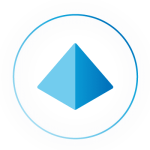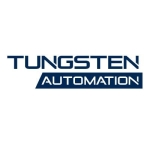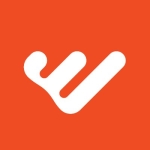We generally use UiPath for invoice processing, finance-related processes, and other similar processes in the oil and gas industry, including government and child welfare use cases.
My organization also used UiPath to automate processes for a good cause, particularly for a US organization that was into child welfare and adoption, so that was one of the use cases: automation for a child adoption and child welfare organization.
To me, the most valuable feature of UiPath is document understanding.
AI is also a valuable feature, as that is the current trend, so it's one of the most essential features of UiPath.
I found it very easy to build automation through the solution, as it has a drag-and-drop interface. If you know the flow and understand the basics, you can easily build automation in UiPath. In simple terms, the solution has a low code interface.
My organization saw many positive outcomes from UiPath automation, mainly when it was applied to an organization in the US focused on child welfare and adoption.
The solution also enabled my organization to implement end-to-end automation. That is important because I would always prefer some end-to-end automation wherever possible, even with a bit of human touch in the loop. I find solutions that enable end-to-end automation, such as UiPath, great.
I found the UiPath user community valuable. I'm a very active member of that community, and one of the good things about it is that it's active and full of people helping each other learn and grow, even when people don't know each other. I learned a lot from the community to be who I am today.
My organization worked with one client with an on-prem environment, and UiPath still has a good platform for an on-premises setup. It's called the Automation Suite, particularly the latest version.
My team, including myself, took courses from the UiPath Academy, and I recommend the academy to anyone interested in learning RPA and understanding the basics of UiPath. Even for someone who needs some refresher or retraining, I would recommend UiPath Academy, as I find it one of the best places to learn.
My organization used several UiPath AI functionalities for automation, including document understanding, language understanding, and even generative AI, which has significantly helped.
I also like that the AI functionality of UiPath enabled my organization to automate more processes overall.
The solution helped speed up digital transformation, mainly because manual processes take up much time. Still, with UiPath, time and costs were drastically reduced, so I find the solution beneficial. It has also reduced human error in the organizations in which it was implemented and even freed up employee time. The amount of time freed up would depend on the use cases, but the time saved would be significant for a company with a lot of automation. UiPath also helps save costs, but it depends, so it would be difficult to determine a number or percentage.
What could be improved in UiPath is the release or update because my organization noticed that a few minor bugs occur from time to time, mainly on the development side. That is not a showstopper, but if the UiPath team could inform my organization ahead of time, that would reduce the need for developers to find a workaround for the bugs. UiPath releases need to be improved.
I started using UiPath in 2019. I'm still using it.
Stability in UiPath is good, but this relates to the little bugs that my organization noticed in the community edition of the solution, not the enterprise version. Other than the minor bugs, stability-wise, UiPath is good.
UiPath is a very scalable solution.
My experience with the UiPath support team is very good. The team was very helpful and supportive. The support team is an eight on a scale of one to ten.
Before UiPath, I used Microsoft Power Automate and Blue Prism. Still, UiPath is more advanced when compared to the two tools, plus UiPath has a much broader scope, with over twenty products addressing different stages of the project lifecycle.
The AI or RPA and automation capabilities offered by UiPath are also quite good versus what Blue Prism and Microsoft Power Automate offer. UiPath is one of the leading tools in the market.
Deploying UiPath in the cloud is easy because it only requires some configuration before use.
For on-premises deployment, you need to install specific applications to get the solution to work. Still, with the UiPath support team, you can easily do the on-premises deployment, so deployment isn't a big issue.
The pricing for UiPath is OK, but it's a bit on the higher side, as the target audience is a bit different.
UiPath is deployed differently for clients. Some have an on-premises deployment, while some deploy it on the cloud.
You don't need many people to deploy the solution because if you have the infrastructure, such as the database and the server, ready, one person who understands the infrastructure would be able to do it.
My rating for UiPath overall is a nine out of ten.
My organization is a partner of UiPath.





















